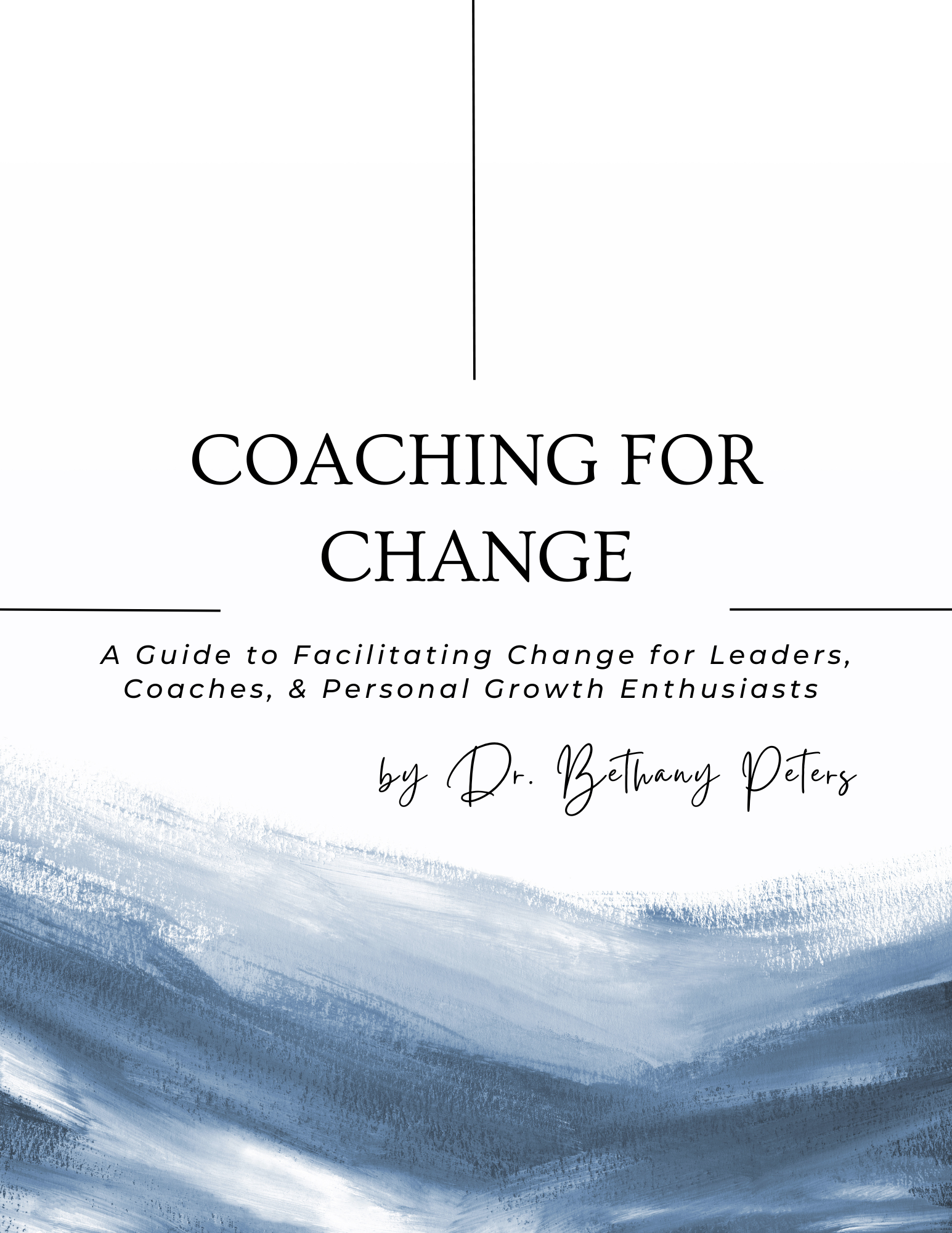Create a Compelling Vision [Step 1]
What is your vision for change?
Seven Steps to Sustainable Change: A Blog Series to Support Healthy Change & Leadership Development
What personal change initiative is your current priority? Perhaps you find yourself in the midst of a major change related to a career or life transition. Or, you may have in mind some important growth opportunities related to your everyday habits, relationships, and work.
This blog series is dedicated to identifying practices that provide leaders with a pathway to support healthy change and growth. The starting point is here, with the practice of developing clear vision. What’s your process for creating a vision for the growth and change you want to see?
“Vision without action is a daydream. Action without vision is a nightmare.”
What comes to mind when you hear the word vision?
If you are a big picture thinker who thrives on crafting future possibilities, you may immediately feel strength and energy as you start to contemplate many potential directions to shape your future. If, on the other hand, you tend to be an action-oriented contributor with your feet firmly planted on the ground, you may shudder as you recall brainstorming sessions with overly zealous team members dreaming up elaborate, ambitious plans that somehow seemed to lack in both clarity and practicality. Or, maybe you are somewhere in the middle of these polarities, striving for a healthy balance of both vision and action.
How would you rate yourself in the process of creating a clear personal vision?
1- I cannot see beyond today and prefer to determine life’s direction one step at a time.
2- I am overwhelmed with too many potential future visions, each of which lacks clarity.
3- I gain peace and clarity from pursuing one broader life vision.
4- I have established a process that helps me regularly refine vision for specific areas of my life.
Identify a Compelling Future Vision
One of the most important initial steps to secure a path to personal change is to identify a future vision that energizes and excites you. When you are ready for growth and change, it may be tempting to jump directly into setting goals and trying new strategies. However, social psychologist Jonathan Heidt explains how many change efforts fail because we don’t engage our emotions in the change process (see this video narrated by Dan Heath for a fuller explanation).
In his theory of intentional change, professor Richard Boyatzis explains how identifying a motivating vision activates positive emotions in the brain, and creates more capacity for our creativity to flourish. Boyatzis and his co-authors Smith and Van Oosten describe this dynamic in their book, Helping People Change: Coaching with Compassion for Lifelong Learning and Growth:
“The process of unearthing and distilling a personal vision ... helps us to see a bigger picture, engage in intelligent thought, be more empathetic, move to action, enact a larger range of behaviors, and build resilience to get through the tough times. ”
This process of envisioning is important work. If we are too anxious to get into achievement mode, we may shortchange the emotional resources we desperately need to support our transformation efforts.
If the thought of creating a personal vision is appealing but feels too fluffy, one concrete strategy to make it more practical is to think of questions to help you envision future possibilities. In their book Appreciative Coaching, authors Orem, Binkert, and Clancy demonstrate how to apply appreciative (affirming) language in our question-asking. They define appreciative questions as open-ended questions that inspire curiosity and positive momentum.
Pause for a moment and consider:
How likely are you to stop and envision a different future for yourself?
What can you see yourself doing differently?
What does this change look and feel like?
What are the positive outcomes?
What does success look like?
Clarify Your Vision
Your responses to these types of appreciative questions can help you to identify creative possibilities for the future, and can be adapted to encourage new vision for specific areas (for example, for your financial health, your leadership strategies, or your family life).
If your vision has started to emerge but is still fuzzy, don’t move forward yet. Take the time and identify specific tools to find deeper clarity. In his book Visioneering, Andy Stanley describes a vision as “a clear mental picture of what could be, fueled by the conviction that it should be.” Increased clarity will lead to greater capacity to do the hard work that leads to long-term change.
What strategies help you clarify your vision for the future?
Clarifying your vision for any aspect of your life is a process that requires time and space for reflection. Sometimes you may find pieces of your vision are more likely to emerge in quiet spaces with a slower pace, and with fewer distractions. Or, it may be that meaningful conversations and connections with others provide the energy and feedback you need.
“The soul speaks its truth only under quiet, inviting, and trustworthy conditions.”
Which of these strategies help you to gain clarity on your vision for change and growth?
Parker Palmer, founder of the Center for Courage & Renewal, recommends the practices of listening and reflecting as key disciplines that can lead to greater discernment.
Author Tchiki Davis suggests the benefits of gaining mental clarity from a digital detox.
Bill George, author of True North, discusses how recognizing patterns in our life stories and leadership journeys can help increase awareness about the values and principles important to shape our future focus.
Get the Complete Toolkit to Inspire Growth & Change
Get my free 60-page ebook featuring my 8-step process for growth and 80 powerful questions for coaching or reflection - designed for leaders, coaches, & personal growth enthusiasts.
You'll also join 2,000+ professionals who receive The Coaching Mindset, my newsletter for practical tips to inspire intentional growth and tools to take a coach approach.
References
Boyatzis, R., Smith, M. L., & Van Oosten, E. (2019). Helping people change: Coaching with compassion for lifelong learning and growth. Harvard Business Press.
George, B. (2010). True north: Discover your authentic leadership. John Wiley & Sons.
Orem, S. L., Binkert, J., & Clancy, A. L. (2007). Appreciative coaching: A positive process for change. John Wiley & Sons.
Palmer, P. J. (1999). Let your life speak: Listening for the voice of vocation. John Wiley & Sons.
Stanley, A. (2012). Visioneering: Your guide for discovering and maintaining personal vision. Multnomah.






